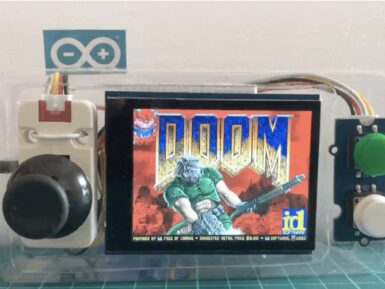
Overview
Analog pH Sensor / Meter Kit specially designed for Arduino controllers and has convenient and practical "Gravity" connector and a bunch of features. Instant connection to your probe an your Arduino to get pH measurements at ± 0.1pH (25 ℃). For most hobbyist this great accuracy range and it's low cost makes this a great tool for biorobotics and other projects! It has an LED which works as the Power Indicator, a BNC connector and pH2.0 sensor interface. To use it, just connect the pH sensor with BND connector, and plug the pH2.0 interface into the analog input port of any Arduino controller. If pre-programmed, you will get the pH value easily. Comes in compact plastic box with foams for better mobile storage.
Build your own pH meter gadget, or a water monitoring station for your water tanks. It could make for the ultimate water control device. Use it for your aquaponics or fish tanks or other materials that need measurements.
Tech specs
- Module Power : 5.00V
- Module Size : 43 x 32mm(1.69x1.26")
- Measuring Range :0 - 14PH
- Measuring Temperature: 0 - 60 ℃
- Accuracy : ± 0.1pH (25 ℃)
- Response Time : ≤ 1min
- pH Sensor with BNC Connector
- pH2.0 Interface ( 3 foot patch )
- Gain Adjustment Potentiometer
- Power Indicator LED
Get Inspired
Print a claw on your 3D printer and use a myoelectric sensor to control it.

"But can it run Doom?" is more than just a joke in the tech world. It is also a decent litmus test for the computing power of hardware. That test isn't very relevant for modern computers, but it is still worth asking when discussing microcontrollers. Microcontrollers vary in dramatically in processing power and memory, with models to suit every application. But if you have an Arduino Nano ESP32 board, you can run Doom as Naveen Kumar has proven. The Nano ESP32 is a small IoT development board for the ESP32-S3 microcontroller, featuring Wi-Fi® and Bluetooth® connectivity. It also has a relatively high clock speed and quite a lot of memory: 240MHz and 512kB SRAM, respectively. That still isn't enough to meet the requirements of the original Doom release, which needed a lot more RAM. But Kumar demonstrates the use of an MCU-friendly port that runs well on this more limited hardware. Want to give it a try yourself? You'll need the Nano ESP32, an Adafruit 2.8" TFT LCD shield, an M5Stack joystick, a Seeed Studio Grove dual button module, a breadboard, and some jumper wires to create a simple handheld console. You'll have to compile and flash the Retro-Go firmware, which was designed specifically for running games like Doom on ESP32-based devices. You can then load the specialized WAD (Where's All the Data) files. Kumar reports an average frame rate at a 320×240 resolution, which is very playable.









